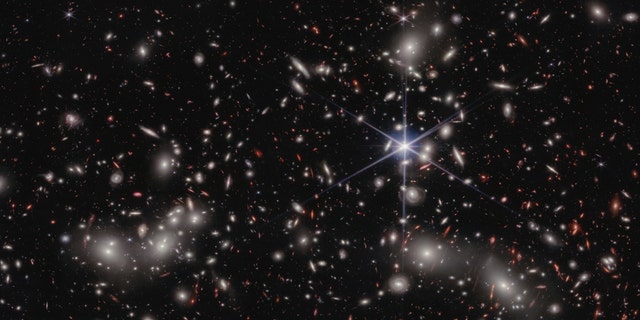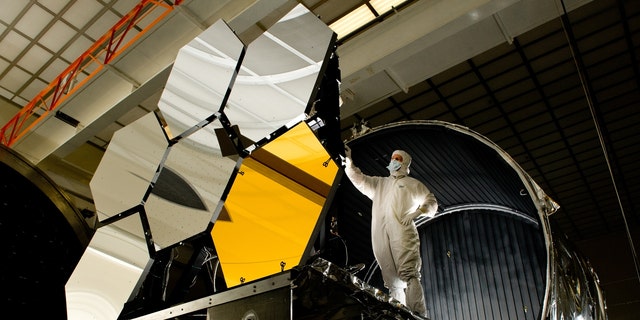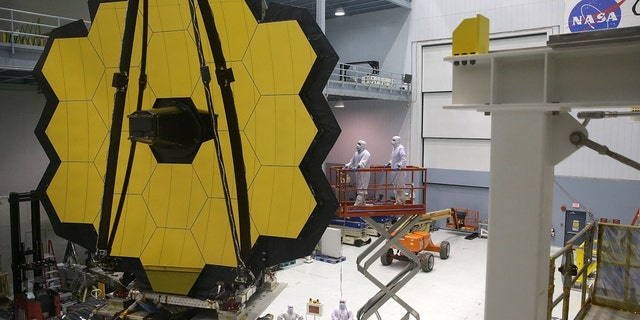NASA’s James Webb Space Telescope has captured never-before-seen details in a region of space known as Pandora’s Cluster.
A new deep field image from the observatory displays three clusters of galaxies coming together to form a megacluster. The combined mass of those clusters creates a gravitational lens, allowing scientists to observe more distant galaxies in the early universe.
The cluster’s central core has been previously studied in detail by the Hubble Space Telescope.
By using Webb and its powerful infrared instruments with a mosaic view of the region’s multiple areas of lensing, astronomers aimed to achieve a balance of breadth and depth the agency said would open a new frontier in the study of cosmology and galaxy evolution.
HUBBLE TELESCOPE SPOTS PAIR OF GALAXIES NEAR BIG DIPPER

Astronomers estimate 50,000 sources of near-infrared light are represented in this image from NASA’s James Webb Space Telescope. Their light has traveled through varying distances to reach the telescope’s detectors, representing the vastness of space in a single image. (Credits: NASA, ESA, CSA, I. Labbe (Swinburne University of Technology) and R. Bezanson (University of Pittsburgh). Image processing: Alyssa Pagan (STScI))
The new view stitches Webb snapshots together in a panoramic image, displaying approximately 50,000 sources of near-infrared light.
Notably, the gravitational lensing distorts the appearance of the background galaxies, and the cluster lens is so massive that it warps the fabric of space itself.
NEIL DEGRASSE TYSON SAYS JAMES WEBB SPACE TELESCOPE IS WINDOW TO UNIVERSE ‘NEVER BEFORE ACHIEVED’

Ball Aerospace lead optical test engineer Dave Chaney inspects six primary mirror segments, critical elements of NASA’s James Webb Space Telescope, prior to cryogenic testing in the X-ray & Cryogenic Facility at NASA’s Marshall Space Flight Center in Huntsville, Alabama. (Credit: NASA/MSFC/David Higginbotham)
To the lower right of the image, which has never been imaged by Hubble, the lensing core contains hundreds of distant lensed galaxies that appear like faint arced lines in the image.
“Pandora’s Cluster, as imaged by Webb, shows us a stronger, wider, deeper, better lens than we have ever seen before,” Ivo Labbe, of the Swinburne University of Technology and co-principal investigator of the Ultradeep NIRSpec and NIRCam ObserVations before the Epoch of Reionization (UNCOVER) program, said in a statement. “My first reaction to the image was that it was so beautiful, it looked like a galaxy formation simulation. We had to remind ourselves that this was real data, and we are working in a new era of astronomy now.”

Engineers and technicians assemble the James Webb Space Telescope on Nov. 2, 2016, at NASA’s Goddard Space Flight Center in Greenbelt, Maryland. (Alex Wong/Getty Images)
CLICK HERE TO GET THE FOX NEWS APP
Labbe’s team used the Near-Infrared Camera, or NIRCam, to capture the cluster, for a total of around 30 hours of observing time. The next step for the team will be to go through imaging data and select galaxies for follow-up observation with the Near-Infrared Spectrograph (NIRSpec).
